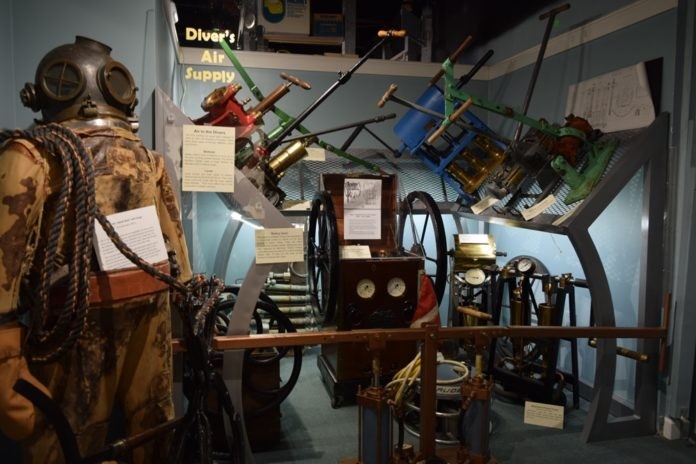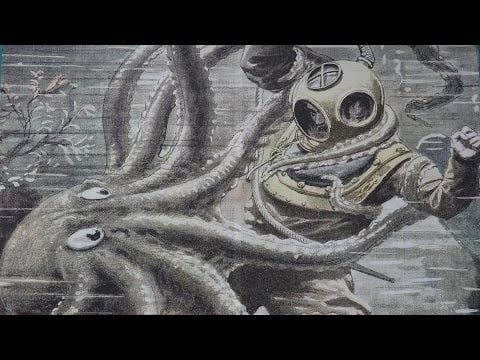If you find yourself in the Florida Keys with some off gas time, consider stopping at the small History of Diving Museum. I was recently in Key Largo to do some diving and the Coast Guards small craft advisory caused all the diving to be canceled. High winds were creating waves up to nine feet. Most the time the bad weather does not cancel the diving, dives are done on the leeward side. However, this storm had winds from the north so it impacted diving on both sides of the key. I had read about the museum before and decided that since it was nearby, I would give it a visit.
Generally, when we think of diving, it is focused on scuba and we look at a time frame of maybe 75 years. Most of the items and exhibits in this museum are items much older. It tells us about diving as long ago as 4500 years. The 14 exhibits explore the world of diving bells and early diving helmets. It shows us technology that most of us would be surprised to learn existed a hundred even two hundred years ago. The museums holding are said to be one of the largest in the world for diving history. The collection is from the personal collection of two remarkable individuals who are the founders of the museum Doctors Sally and Joe Bauer Jr. Doctor Joe passed away in 2007, his wife is still active in the museum.
The museum is a not for profit educational institute and I think their mission statement gives a clear understanding of their purpose:
“The Museum is dedicated to collecting, preserving, displaying, and interpreting artifacts, antiques, books, documents, photographs, and oral history relative to the History of Diving. We tell the international story of man’s attempts to explore, understand, and venture under the sea. We also celebrate the special role that South Florida and the Florida Keys played in this story.”
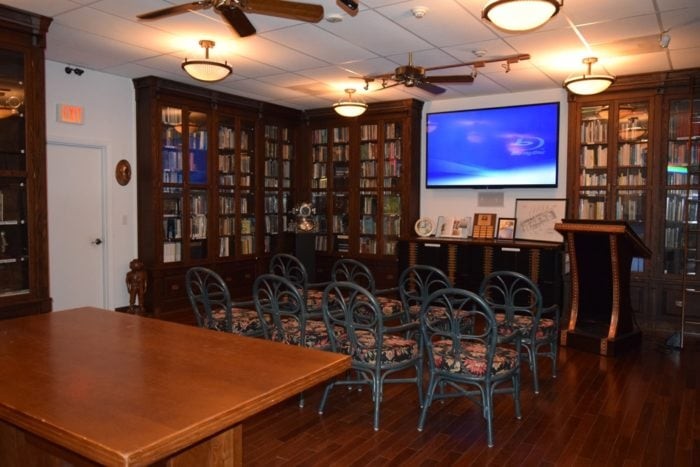
The museum has 14 permanent exhibits, a library and a gift shop. Visitors start their tour of the diving museum with a short 3-minute film presented in the library. The diving museum has over 2,500 items of reference and research materials dating back to 1535. Researchers come here to the library to use the material for their own studies.
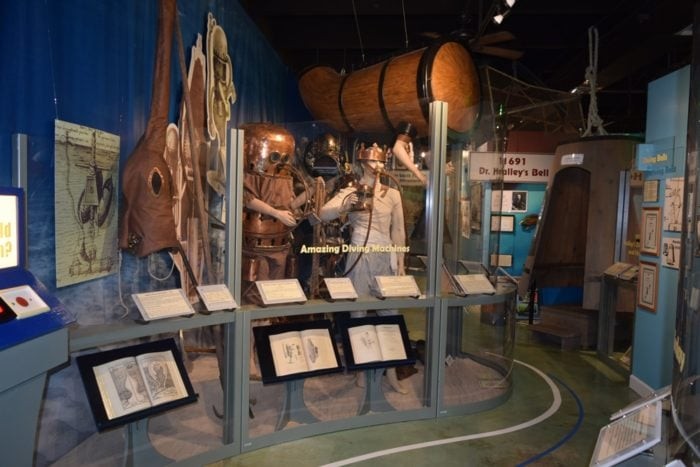
The path through the diving museum is done along with a timeline earliest to more modern. The first exhibit has illustrations of some of the earliest known diving equipment and replicas of items long lost to history. A replica of Edmund Halley’s 1691 diving bell is on display where you can enter and imagine you are diving deep into the sea. Sally Baurer has actually dived in a similar diving bell during a trip to Norway in 2005. Another exhibit called The South Florida Adventure highlights the influence South Florida had on the diving industry. The open-bottom Divinhood, invented by the Miller-Dunn company of Miami, was a major innovation of its time. Its introduction leads to the development of four major areas of diving: sports diving, underwater photography, treasure diving, and marine biology. At that time Key West was one of the richest cities in the United States. For it was here that the salvage operators were located that helped recover cargo from ships that went aground in the dangerous reefs nearby. The exhibit includes many homemade version of diving helmets that the salvage operators and others used at the time.
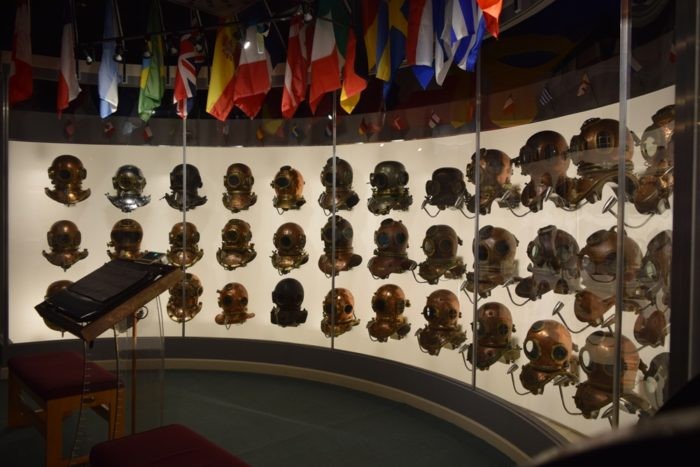
The most breathtaking exhibit has to be the Parade of Nations exhibit. It contains 45 rare diving helmets produced by 24 countries.
The exhibit that me thinking the most was the Deep Diving in the Abyss. These are one-atmosphere suits designed to take divers down beyond a thousand feet below the surface. The air inside the suit is maintained at surface pressure so there is no concern of decompression sickness. The hard shell of the suit protects the diver from the outside pressure and keeps the air from compressing.
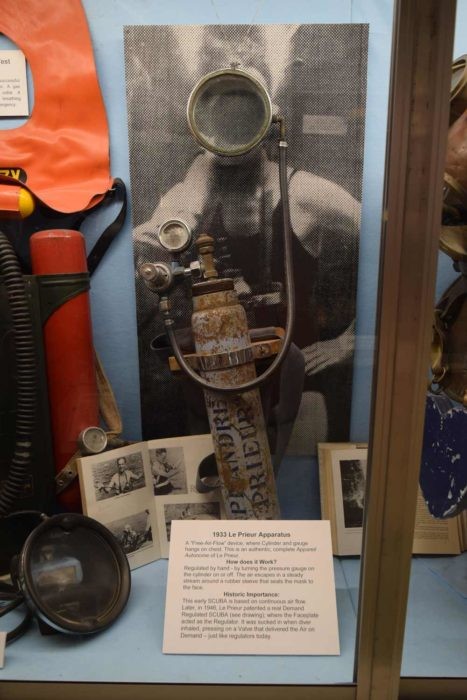
The museum is family friendly, with some interactive exhibits that are fun for children as well as adults. The Aquarium allows you to put your head inside of an old diving helmet that is inside of the aquarium. It gives you a close up view that a hard hat diver would experience.
One thought that kept creeping back into my mind as I walked the museum, was that this was an extension of the life of the two founders. Doctors Sally and Joe Bauer Jr. are both well known and highly respected for their research in different aspects of marine biology as well as diving history. They spent over a decade studying spawning activities of different fish species and Dr. Joe’s research papers were highly regarded. Sally has told others that their fascination with early diving history started when they purchased an old diving helmet at an antique shop while visiting Florida. When they got home, they started to research the old helmet. That started their collection and ignited their passion on the topic. A simple purchase leads to the greatest collection of early diving history.
There is something else you should know about these incredible people. The late doctor Joe Bauer Jr., was not a marine biologist. He was a medical doctor who makes breakthrough discoveries in the field of medical transplantation and advancements in surgical procedures. His obituary says this about him: “He developed Surgical and Medical Intensive Care Units and Initiated Surgical Endoscopy procedures in the Cleveland area. Joe envisioned a way to lower the cost of medical care by developing the first freestanding, physician-owned and operated Outpatient Surgical Center of which he was the Managing General Partner. To promote Outpatient Surgery, he developed a number of surgical procedures that produced less pain and more rapid postoperative recovery.”
Doctor Sally Bauer has been inducted into the Women’s Scuba Diving Hall of Fame for her contributions to the sport of scuba diving. Doctor Sally was also not a marine biologist, she spent her career as an Emergency Medicine physician.
When they retired, they relocated from Ohio where they had lived to the Florida Keys. Here, they started the History of Diving Museum as a means to share the wealth of knowledge they obtain in their lifetime.
Visiting the History of Diving Museum
The museum is open daily from 10am to 5pm at mile marker 83. The address is 82990 Overseas Hwy, Islamorada, FL 3303. That is 82.99 miles north of Key West, and 15 miles south of Key Largo. If you have never been to the Florida Keys, that mileage might seem strange. US Highway 1 starts in Key West and runs north all the way to Maine. In the Florida Keys, the highway is called the Overseas Hwy. While the road passes through many towns and cities in the Keys, the addresses continue uninterrupted and are aligned with the mile markers of US 1. Businesses on the highway use the nearest mile marker as a reference point. Visit their website for more information www.divingmuseum.org/

